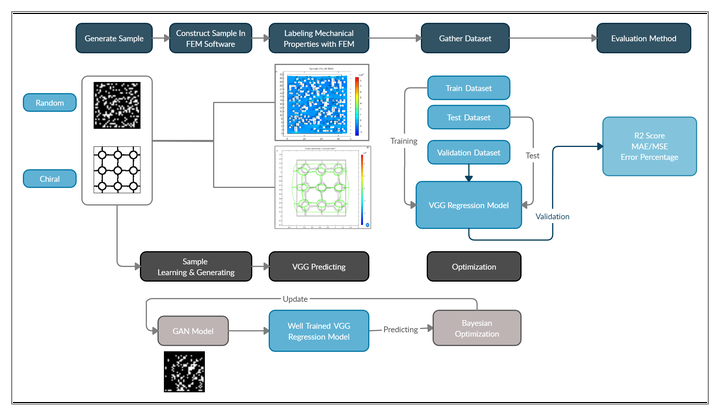Design of Chiral Metamaterials via Deep Neural Networks
 Image credit: Lufter
Image credit: LufterAbstract
Metamaterials with highly human-influenced microstructure may exhibit unconventional physical properties, such as negative index of refraction (NIR), negative Poisson’s ratio (NPR), negative thermal expansion coefficient (NTEC), or deformation-mode couplings. The couplings between tension/compression and torsion or bending are intrinsically due to the intertwined internal degrees of freedom at each material point. Traditionally, the design of metamaterials relies on human experiences, such as the Edisonian methodology, based on the concept of trial and error. By using deep convolution neural networks, such as VGG, we have developed a methodology to create metamaterials with desired chiral microstructures, as shown in the flowchart below. Data consisting of microstructural image information and effective mechanical properties are prepared via finite element calculations. Generation of initial chiral samples for DNN training is based on a Markov chain process. Our DNN can be successfully trained to correlate the chiral microstructures and their effective mechanical properties. Creating samples via generative adversarial networks (GAN) or other strategies is discussed.